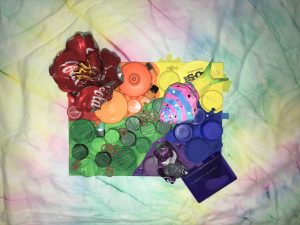Matthew Sides
In the spirit of Valentine’s Day, I must ask “what do you love?” or more specifically “what do you hold dear?” and “why do you love it?” If your first response is anywhere near “anything but reading a blog” and “because blogs are boring,” then you probably share the sentiment of most people reading blogs on Valentine’s day, but you are also missing the point. If you answered the questions with some thought and honesty, I would say you probably focused on domestic things. I doubt you share the same answer as “I love roads because of their dependability and reliability.” This is understandable, as not many people ever actually seem to place roads on their “I love” lists. Our answers to these questions most likely differed entirely, but I would like you to put the thing you love into the forefront of the discussion and ask yourself “What would I do without this thing that I love?” and “could I live happily without this thing that I love?”. By putting the ‘thing that you love’ in the forefront of the discussion, you may discover that you need to reassess or reaffirm your love of that specific thing.
In the case of the United States roadway system, I would suggest following three major aspects of the ‘topic of roads’ by answering “what?”, “why?”, and “how?” so that I can elaborate on the many things I love. I would also use these three questions to find and analyze some major modern flaws with our roads and then to come up with possible solutions to the problematic aspects of the roads.
What:
To ask why, one must first as what? What is a road? According to the dictionary, a road is defined as “a long, narrow stretch with a smoothed or paved surface, made for travelling by motor vehicle, carriage, etc., between two or more points; street or highway.” Using this definition may not give one a reason to appreciate the road. But placing it in the context of a highway is very relatable. We use the highway almost every day. According to the Federal Highway Administration (FHA), the highway system as we know it began in 1956, when then president Dwight D. Eisenhower successfully signed the Federal-Aid Highway Act of 1956. This act kickstarted the expansion of highway infrastructure. It allowed the federal government to pay for 90% of the total cost of construction of interstate highways. The interstate highway expands across 42,795 miles of the united states according to the FHA. The construction of roads is not simple. They need planning, pavement and concrete according to www.michigan.gov/mdot. This material is extracted as raw material and processed into the final product and then is laid onto of forests and expanded. The forests, ecosystems and overall climate change drastically. The benefits of expansion are easy access and direction which leads to better efficiency and economic growth and then birth rate growth. The cost of highways is high as it is a juxtaposition of the natural world being destroyed and the unnatural industrial world being expanded. As one dies slowly, the other rises.
Why:
Why is the expansion of the thoroughfare so relevant? The roads and their expansions are based on balance. They must balance space and effect. According to a www.ran.org article, there are approximately a total of 7 billion trees cut down each year globally, and around 12% or 840 million of those trees are taken down in part because of road construction. This is a massive problem. It is also a massive benefit depending on how you look at it; the roads’ benefits may outweigh what the policy makers deem to be the cons of the deforestation. The two sides of the why are “why do we need roads?” and “why do we need to cut down so many trees for a luxury?” This is where I question the love of roads, I am deciding whether the death of trees is worth it. I would say no, because there are so many other things going into highway maintenance that the depreciation doesn’t seem worth the cost to keep it up.
How:
The final question we must ask is how this is all going to play into an argument for still loving roads. I personally have a love for the road’s ability to guide and give access and efficiency, but it tears down some of the greatest aspects of earth that make the world worth living on. It takes away the natural diversity, simplicity, and personality of the earth. The love for roads is like a toxic love where the one being loved erases all other enjoyable things out of one’s life. At least roads could be seen like this. I still think that the roads of America are massively flawed but also that they can be reduced and replaced. I believe we will find way to remedy to the problem and even reverse it.
Conclusion:
The reevaluated look at the roads of our country shows that roads are very complicated. Like stated before, they enable us to grow massively, but at the cost of natural resources and deforestation. Roads are not doing a disservice; they are beneficial to the everyday citizen, but to the generations in the future, there will become problems with scarcity of resources. I believe the roads will die out and be covered by a new system. Or at least if this happens then there might be hope that the world does not end.
Citations:
Definition of Roads: https://www.dictionary.com/browse/road
The Origin: https://www.fhwa.dot.gov/interstate/faq.cfm
Cutting Down: https://www.ran.org/the-understory/how_many_trees_are_cut_down_every_year/
The Process: https://www.michigan.gov/mdot/0,4616,7-151-9615-129011–,00.html

